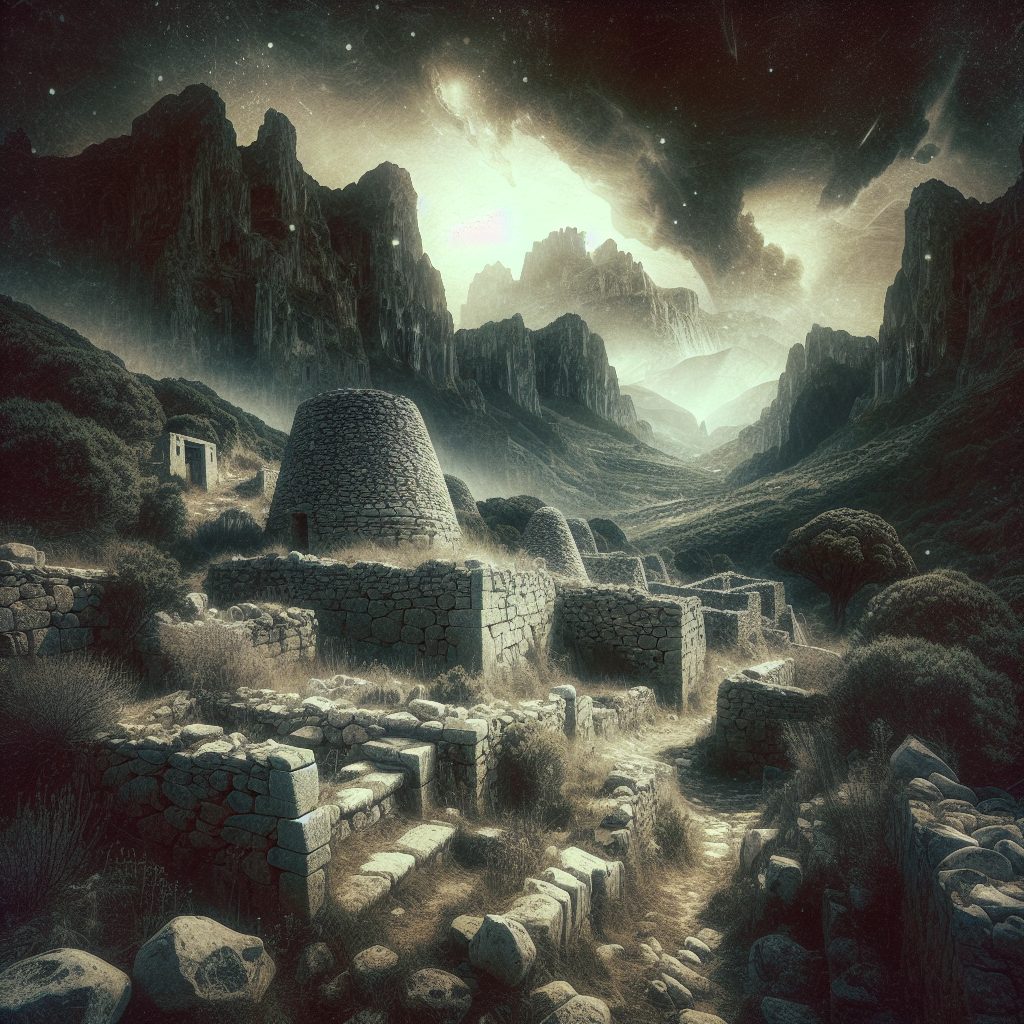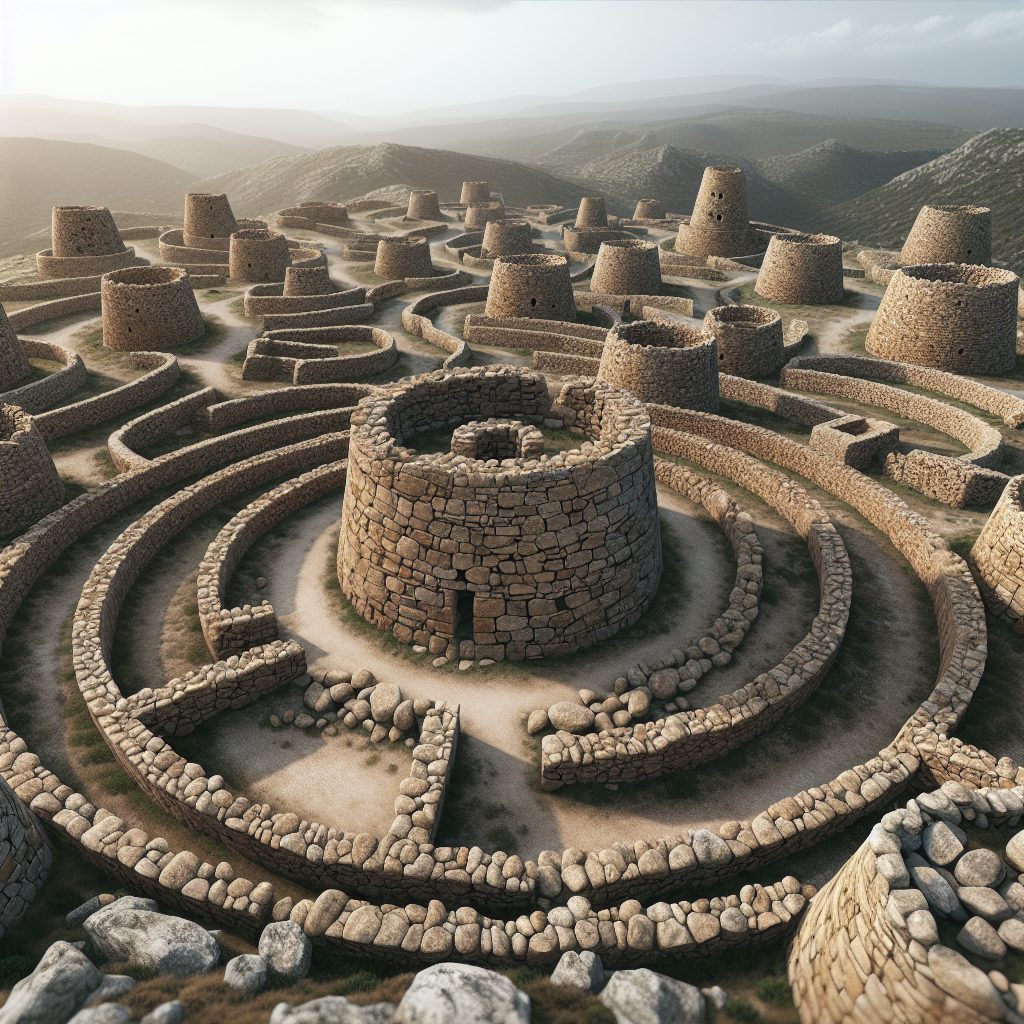Nuraghe Mysteries Uncovered is a captivating topic that sheds light on the ancient stone structures found throughout the island of Sardinia, Italy. These structures, known as nuraghe, are unique to the region and have long fascinated historians, archaeologists, and enthusiasts alike. The term “nuraghe” refers to the conical or tower-like structures made of large, rough-cut stones, often reaching several stories high.
What makes nuraghe particularly intriguing is their age and the mysteries that surround them. Dating back to the Bronze Age, these structures were built between 1900 and 730 BCE, making them over 3,000 years old. Their purpose, however, remains enigmatic, as they were not merely dwellings, but fortified structures with complex internal systems. Some theories suggest that nuraghe served as defensive military structures, while others propose more ritualistic or symbolic functions. Regardless of their original purpose, these ancient ruins offer a captivating glimpse into the past.
In our exploration of Nuraghe Mysteries Uncovered, we will delve into the various theories surrounding the purpose of these extraordinary structures. From their strategic military positioning to their intricate architecture, we will uncover the unique features that make nuraghe an essential piece of Sardinia’s rich history. We will also discuss recent archaeological discoveries and advancements in technology that have allowed researchers to gain new insights into these ancient sites. Stay tuned for the key takeaways from our investigation into Nuraghe Mysteries Uncovered, which will shed light on the enduring allure of these enigmatic structures.
Key Takeaways
1. Recent archaeological discoveries in the ancient Nuraghe complex of Su Romanzesu have shed new light on the mysterious Nuragic civilization that once thrived in Sardinia, Italy. Excavations have revealed a vast network of interconnected stone structures dating back over 3,000 years, providing invaluable insights into the advanced architectural and engineering knowledge of this ancient civilization.
2. The impressive Nuraghe complex consists of numerous towers, walls, and other structures, built using large stone blocks without any mortar, showcasing the exceptional construction techniques of the Nuragic people. The intricate design and strategic positioning of the Nuraghe Towers suggest their role in defending the settlements from external threats, while communal gathering spaces and courtyard areas highlight the social and cultural significance of these structures.
3. The discovery of a unique stone carving depicting a ship with oars, uncovered within the Nuraghe complex, provides intriguing evidence of the Nuragic civilization’s seafaring capabilities. This finding challenges previous assumptions that the Nuragic people were primarily land-based agriculturalists and opens up new possibilities for understanding their trade networks and interactions with other Mediterranean cultures.
4. The excavation of burial sites within the Nuraghe complex offers valuable insights into the spiritual and religious beliefs of the Nuragic civilization. Intricate burial rituals, including the inclusion of personal ornaments and weaponry, highlight the importance of ancestral veneration and the belief in an afterlife. Additionally, the presence of bronze figurines known as “bronzetti” suggests a connection between the Nuragic culture and the wider Bronze Age Mediterranean world.
5. The discovery of an underground chamber within a Nuraghe Tower has raised intriguing questions about the function and symbolism of these structures. The purpose of these underground spaces remains uncertain, but they may have served as ceremonial or ritualistic chambers, reinforcing the Nuragic people’s connection with their ancestral spirits and deities. Further research and analysis of these new findings promise to deepen our understanding of the Nuragic civilization and its contributions to ancient Mediterranean societies.
What are the Untold Secrets Behind the Nuraghe Mysteries Uncovered?
The Origins of Nuraghe Structures
Nuraghe structures are ancient megalithic towers found in Sardinia, Italy. These peculiar structures date back to the Bronze Age and are considered as some of the oldest surviving architectural wonders in the world. The mystery surrounding the origins of Nuraghe structures has led archaeologists and historians to delve deep into their history and significance.
Construction Techniques and Design
One of the most intriguing aspects of Nuraghe structures is their construction techniques and design. The towers are built using large blocks of limestone, carefully stacked to create a conical shape. The stones were not only perfectly carved but also fitted together without any mortar or bonding material. Researchers have been amazed by the precision and skill involved in the construction of these towers, especially considering the tools available during that time.
Purpose and Function
While the purpose of Nuraghe structures is not completely understood, many theories have been proposed about their function. Some suggest that they served as defensive fortifications, offering protection to the inhabitants against external threats. Others believe they were religious or ritualistic centers, possibly used for astronomical observations or as ceremonial sites. The exact purpose of Nuraghe structures remains a subject of ongoing debate and speculation.
Mysterious Nuragic Civilization
The Nuraghe structures are closely associated with the Nuragic civilization that thrived in Sardinia during the Bronze Age. This mysterious civilization left behind countless artifacts and archaeological remains, shedding light on their way of life and cultural practices. However, many aspects of the Nuragic civilization remain enigmatic, such as their complex social organization, economic system, and their sudden decline.
Recent Discoveries
In recent years, archaeologists have made several groundbreaking discoveries related to the Nuraghe structures. Advanced technologies, such as lidar scanning and 3D reconstructions, have allowed researchers to gain new insights into their architectural features and layout. Additionally, excavations have unearthed artifacts and clues that provide glimpses into the daily lives of the Nuragic people. These discoveries continue to deepen our understanding of the Nuraghe mysteries and challenge previous assumptions.
Preservation and Tourism
Preservation efforts are crucial to protect the Nuraghe structures and ensure their cultural significance is recognized and appreciated. Various organizations and authorities are working towards the restoration and conservation of these ancient monuments. Additionally, the popularity of Nuraghe structures among tourists has led to the development of tourism strategies that promote responsible visitation, educational programs, and interpretive centers. Balancing tourism with preservation remains a continuous challenge.
Exploring the Nuraghe Mysteries Uncovered: Tips for Visitors
- Plan your visit: Before embarking on your journey to explore the Nuraghe structures, make sure to plan your itinerary. Research the different sites and choose the ones that align with your interests and preferences.
- Guided tours: Consider joining a guided tour led by knowledgeable experts who can provide valuable insights and context about the Nuraghe structures. They can enhance your understanding of the mysteries surrounding these ancient sites.
- Interpretive centers: Visit interpretive centers or museums dedicated to the Nuragic civilization. These centers often house informative exhibits that explain the history, construction techniques, and cultural significance of Nuraghe structures.
- Respect the sites: Nuraghe structures are delicate archaeological sites, and it is essential to be respectful during your visit. Follow designated paths, refrain from touching or climbing the structures, and do not litter.
- Bring a camera: Capture the beauty and architectural marvel of the Nuraghe structures through photography. Documenting your visit not only allows you to preserve memories but also raises awareness about these intriguing mysteries.
FAQs
What is a Nuraghe?
A Nuraghe is a type of ancient stone structure found primarily in Sardinia, Italy. It is believed to have been built during the Bronze Age and served various purposes such as defensive fortifications, residences, and religious centers.
How many Nuraghes are there in Sardinia?
It is estimated that there are over 7,000 Nuraghes spread across the island of Sardinia, varying in size and complexity. Each Nuraghe is unique and showcases the advanced architectural skills of the ancient Sardinians.
What are the mysteries surrounding Nuraghes?
There are several mysteries surrounding Nuraghes that continue to intrigue researchers and historians. These include the purpose of their construction, the techniques used to build them, and the symbolism behind their intricate designs.
Were Nuraghes defensive structures?
While many Nuraghes were indeed used for defensive purposes due to their strategic locations and complex architectural features, not all Nuraghes were built as defensive structures. Some served as residences or religious centers, reflecting the diverse functions of these ancient monuments.
What materials were used to construct Nuraghes?
Nuraghes were primarily constructed using large stones, commonly limestone or basalt, without the use of mortar. The stones were carefully interlocked to create the distinctive conical or tower-like shapes that characterize these structures.
Who built the Nuraghes?
The Nuraghes were built by the Nuragic civilization, an ancient culture that inhabited Sardinia during the Bronze Age. The exact identity of the people who built these structures remains uncertain, as there is limited written information about the Nuragic civilization.
What can we learn from studying Nuraghes?
Studying Nuraghes provides valuable insights into the architectural, cultural, and social aspects of the Nuragic civilization. It helps us understand their engineering techniques, trade networks, religious beliefs, and possibly their social hierarchy.
How are Nuraghes preserved today?
Various conservation efforts have been undertaken to preserve and protect Nuraghes as they are integral parts of Sardinia’s cultural heritage. These include stabilization of structures, site maintenance, and regulations to prevent unauthorized excavation or vandalism.
Can visitors explore Nuraghes?
Yes, many Nuraghes in Sardinia are open to visitors who can explore the sites and gain a firsthand experience of these ancient structures. However, it is important to respect the preservation guidelines and regulations while visiting to ensure their long-term preservation.
Are there any ongoing research or excavations related to Nuraghes?
Yes, there are ongoing research and excavation projects conducted by archaeologists and historians to uncover more about Nuraghes and the Nuragic civilization. These projects involve studying recently discovered sites, analyzing artifacts, and utilizing advanced techniques to unravel the mysteries surrounding Nuraghes.
Final Thoughts
Exploring the mysteries of Nuraghes is a fascinating journey that takes us back in time to an ancient civilization that flourished on the island of Sardinia. The unique architecture and cultural significance of these structures intrigue researchers and enthusiasts alike.
By studying Nuraghes, we can gain valuable knowledge about the past, shedding light on the ingenuity and skill of our ancestors. The Nuraghes stand as remarkable testament to the enduring legacy of the Nuragic civilization, and their preservation ensures future generations can continue to uncover their secrets.






